Table of Contents
Welcome
We are happy to bring you the September “Japan Rail Enthusiast Updates” & TSJR News. We did not publish an update in August but we were busy researching for new ideas, including visiting the Akechi Railway in Gifu prefecture and we also put together an article on railways in Mie Prefecture. In coming weeks we will be publishing an article on Hokkaido
We in Japan have had a very hot summer, in fact since June up to the second half of September we have had many days of temperature around 30C ~35C or higher. Parts of Japan have also had very heavy rain. We are hoping for a cooler Autumn. In fact if you are thinking of coming to Japan, Autumn 8October~November) is one of the best times.
October 14th is Railway Day in Japan and October is a month where there are many events of interest for the rail enthusiast. 1st October is another important anniversary – 60 years since the Tokaido Shinkansen, the world’s first high speed railway, opened.
Our last update had quite a few negative items, so this month we have tried to add a few positive ones…
Government has selected the route for the Hokuriku Shinkansen extension between Tsuruga and Osaka
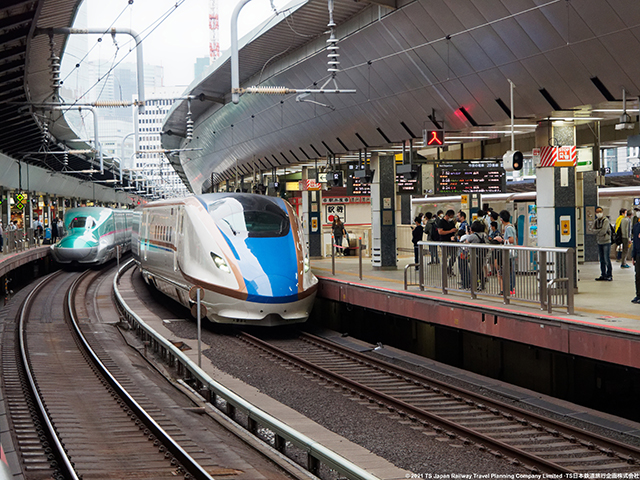
The government has decided its preferred route for the Tsuruga~Shin Osaka extension of the Hokuriku Shinkansen. The choice is based on cost and ease of construction and other factors. The route they have chosen is via the Obama area and Kyoto and then to Shin Osaka. Much of the line will be in tunnels. Crucially they have not chosen which of 3 potential routes into Kyoto would be built, 2 of which would mean building a new station at Kyoto and the third an underground station close to the current Kyoto Station. The line would have its own underground platforms at Shin Osaka.
There is still a long way to go before construction can either start, but several incidents on the Tokaido Main Line recently
have shown how the need for an alternative, all be it a much longer, route between Tokyo and Kansai is needed. The proposed route could also bring a big boost to a very scenic area of Obama ~ Wakasa.
Large rail infrastructure projects, like new shinkansen lines or new or extension of routes in urban areas, are usually undertaken by the national government, through the Japan Railway Construction Transport and Technology Agency (JRTT), and then leased to the railway operator. Some cases local governments and rail companies will also contribute to the cost.
Hankyu latest commuter railway to introduce premium seats on some trains
Hankyu has become the latest non JR Rail Company to introduce premium seat cars to some of its trains, with its “PRiVACE” coaches. As the name suggests, the idea is to provide some privacy and more relaxing environment for commuters and other travellers on what are normally busy trains.
Hankyu with its distinctive brown coloured trains operates in the Osaka, Kobe and Kyoto areas. The new “PRiVACE” car trains will operate on non local services on the Kyoto Line between Osaka Umeda and Kyoto Kawaramachi. Cost Y500 between any two stations. More Information Hankyu PRiVACE web page
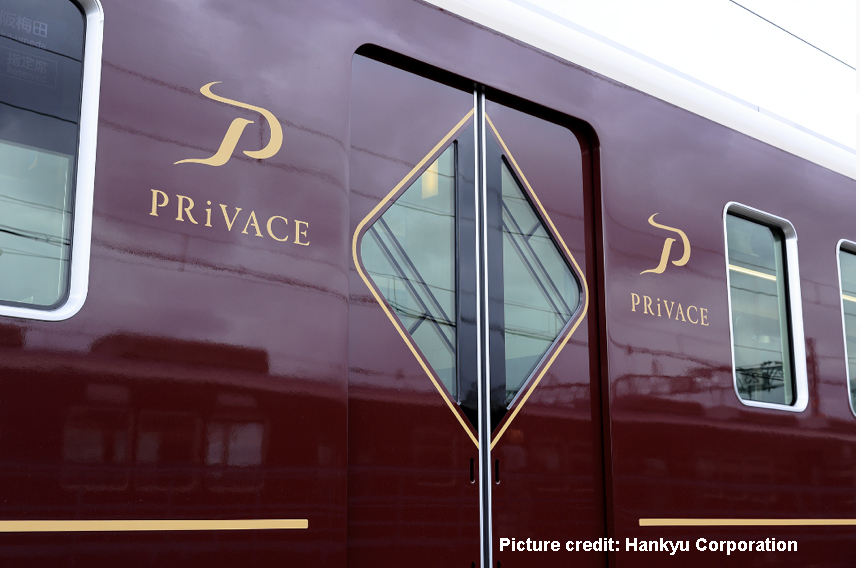
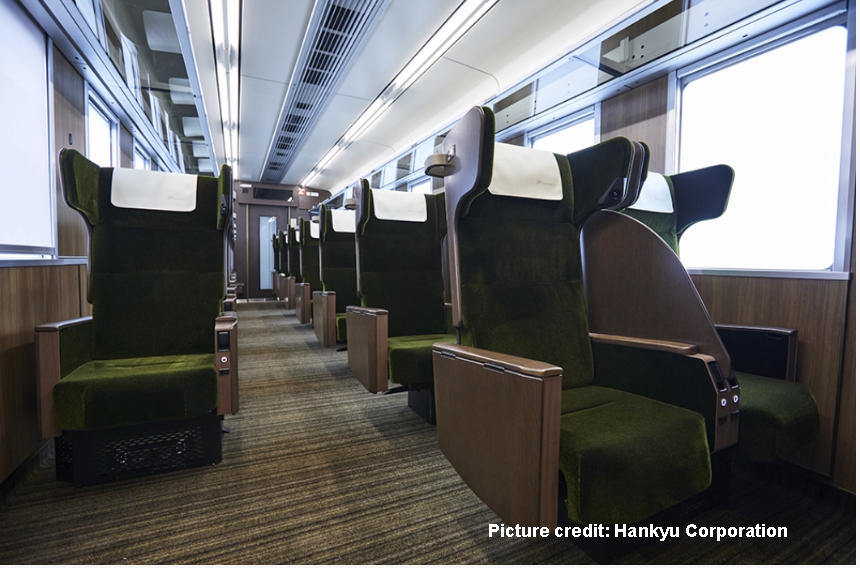
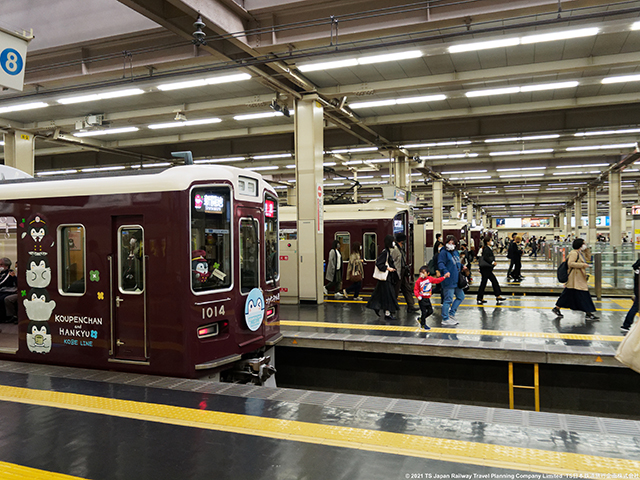
JR East has for a long time had its “green cars” on its longer distance suburban services, which upon payment of a supplement fee can sit in a slightly hgiher grade car with more space and cross seating. The JR East version does not guarantee a seat, in fact very much like the first class car or compartments on UK suburban trains in the past. Keihan Railway in Kansai also for a long time has had its premium car. In recent yeas other railway companies (e.g. Tokyu, Tobu, Keikyu, Hankyu) had also started introducing, either all day or on some evening rush hour services, the latter being aimed at commuters who want to relax on their way home. JR West also introduced its A car on services on the Kobe and Kyoto Lines. Most of the newer ones require a seat reservation as well as the extra fee (normally a flat rate of several hundred Yen).
Successful Crowdfunding leads to start of restoration of Kumamoto Electric Railway’s heritage MoHa71 Electric train car
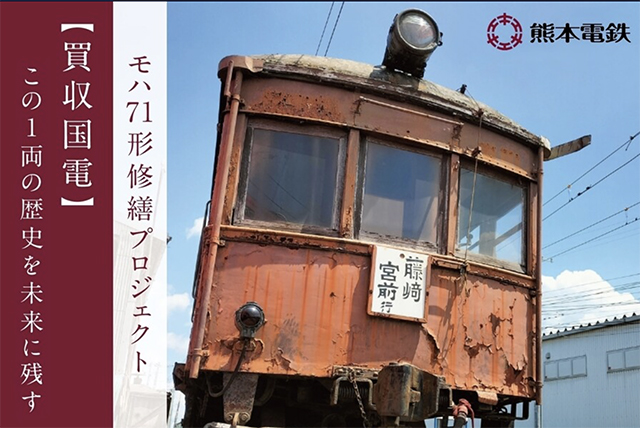
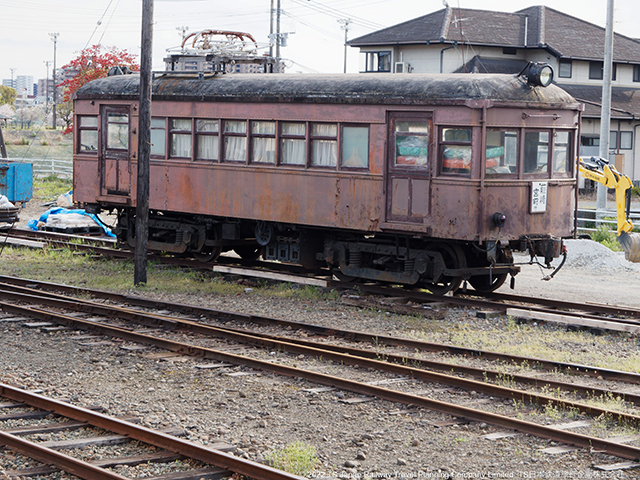
Anyone who has been to Kumamoto Electric Railway’s (Kumaden) Kita Kumamoto Station will have noticed a rather sad & dilapidated train sitting in the sidings. Good news, a crowd funding event was launched by Kumaden to raise money for the cars restoration, and the target was exceeded with Y6,000,000 being raised and the restoration work has started.
[disclosure: TSJR staff contributed to the fund raising]
History
This particular MoHa71 electric train car was built in 1928 for the then newly established Hiroshima Railway. Hiroshima railway was nationalised in 1936 and the train was operated by Japan Government Railway and later Japan National Railways (JNR or Kokudo as it is known in Japan).
Most of the class was scrapped in 1953, except for three survivors, that eventually ended up with the Kumamoto Electric Railway, MoHa71, 72 & 73. As well as passenger services they were used for shunting, including freight at Kita Kumamoto Station / depot. The last unit to survive was MoHa71 which was officially retired in 1981, but was not scrapped..
It should also be noted that MoHa71 also survived the atomic bomb that was dropped on Hiroshima in 1945, as it was out of the area at the time undergoing maintenance at Hatabu.
Being 96 years old this year, it has been decided to restore the car and hopefully have it run again.
If you visit Kyushu, we highly recommend that you visit Kumamoto, amongst other places. Kumaden is an interesting railway with a number of old trains, including Tokyo Metro 01 & 03 series trains that you no longer see in Tokyo, and units from TOEI (Tokyo) and Nankai (Kansai). There is also an old Tokyu 3000 series train (not in service though). Kumamoto also has trams and a couple of scenic JR routes operate to / from Kumamoto.
SL 58654 SL Hitoyoshi to be statically preserved at Hitoyoshi Station
SL 68654 which was retired from service in March 2024 being at the time the oldest operating steam locomotive in Japan, will be statically displayed at Hitoyoshi Station. Although many people has hoped that the locomotive would see service again, even if just occasionally, JR Kyushu have decided this is not feasible and after some restoration work at Kokura Maintenance Works will be transferred to Hitoyoshi Station, which was where the SL Hitoyoshi train used to operated to / from before the JR Hisatsu Line was severally damaged in storms.
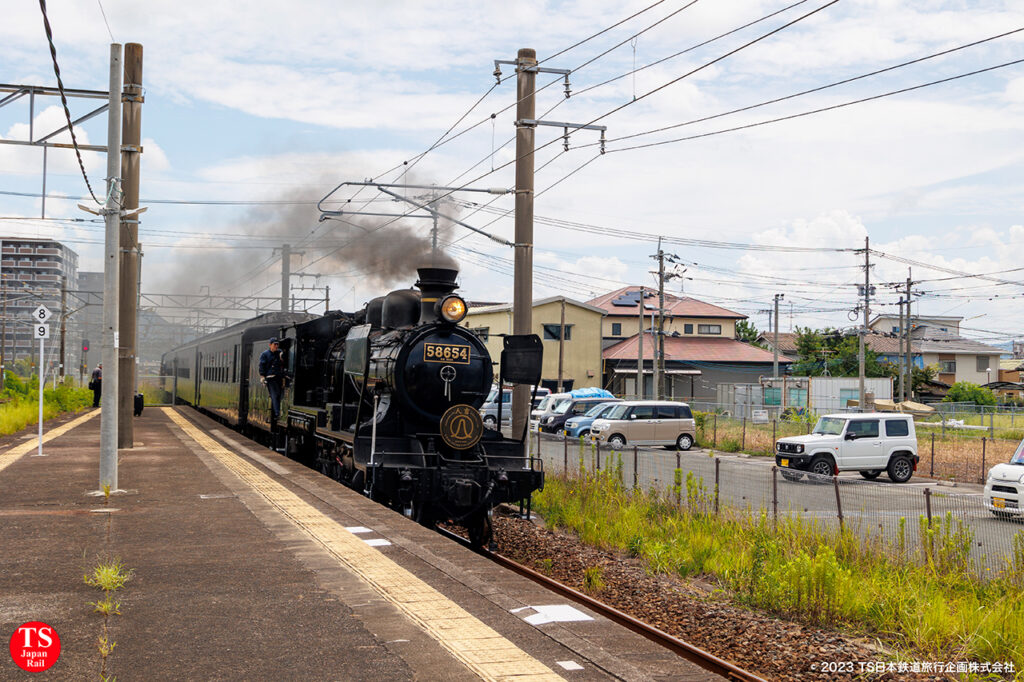
Driverless Shinkansen – Joetsu Shinkansen
JR East has announced the introduction of “Driverless” shinkansen trains on parts of the Joetsu Shinkansen.
The plan is to start in 2029 when trains will travel without a driver or attendant (Grade of Automation or GOA level 4) between Niigata Station and Niigata Shinkansen depot, a journey of 5.1km. This is currently under test at night time]
At the same time to start operating trains between Niigata and Nagaoka, with full automation but an attendant at the train controls level 2 (GOA level 2).
The plan is that from 2030 trains between Niigata and Nagaoka can be upgraded to GAO 3 & 4 and between Nagoka and Tokyo to GAO levels of 2, 3 and then eventually 4.
- GOA2 … automatic operation where a driver is on board at the front of the train (in service trains)
- GOA3 … driverless operation where an attendant is on board but does not need to be at the front of the train (In service trains)
- GOA4… driverless operation without the need for an attendant to be on board the train (in service trains)
[Attendant does not need to be a fully qualified driver, but can operate the train under certain conditions]
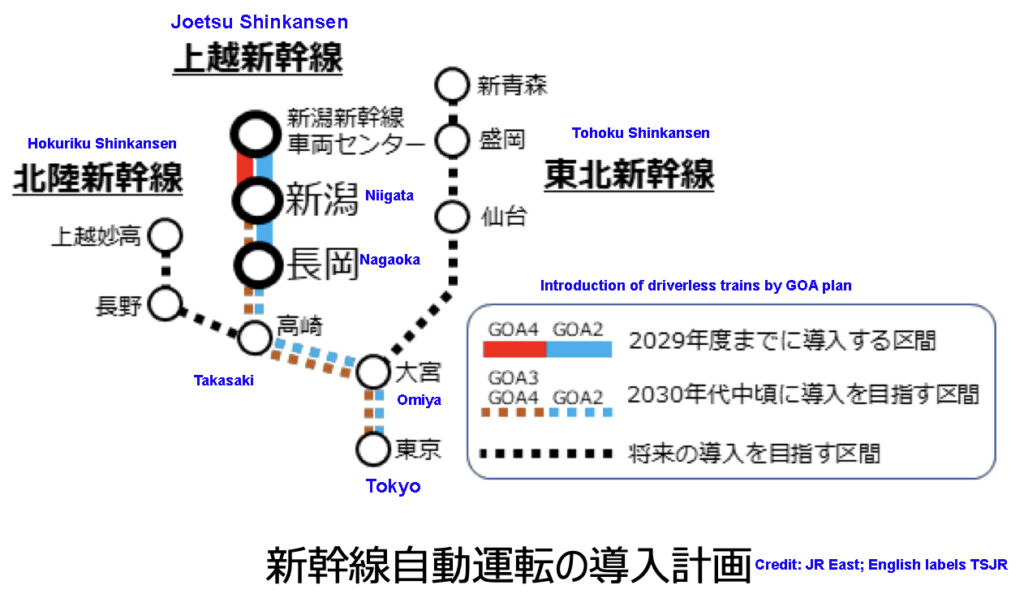
Tokaido Shinkansen, the World’s first high speed train celebrates its 60th anniversary on 1st October.
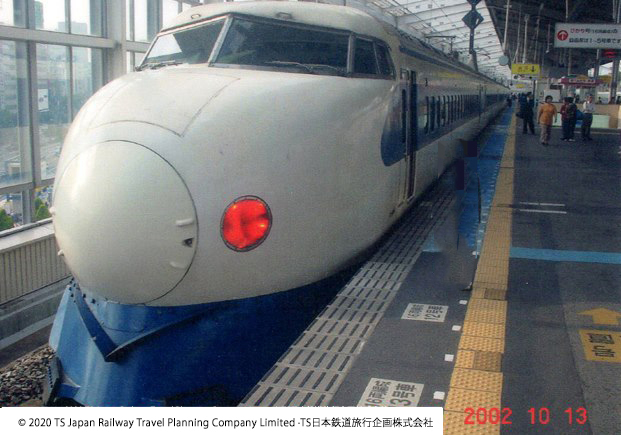
The Tokaido Shinkansen Line between Tokyo and Shin Osaka stations opened on the 1st October 1964. Today, even though it is not the fastest high speed railway in the world, or indeed in Japan, it is still held up as an example of Japan’s engineering and forethought. In fact the picture of the white, blue lined shinkansen passing Mt Fuji is a Japan icon and as one of the busiest high speed railways in Japan and one of the safest, it still shows that in today’s world rail travel has an important role to play.
Although today, the Tokaido Shinkansen gets you to Shin Osaka from Tokyo in 2 1/2 hours; back in October 1964 took 4 hours with a day time hourly schedule together with a hourly all stations Kodama service which took 5 hours. Today there are trains leaving every 5 to 15 minutes through the day (in fact there are around 300 Tokaido Shinkansen departures and arrivals at Tokyo Station everyday (between 6am and midnight). Prior to the Tokaido Shinkansen line opening it took at least 7 1/2 hours to get from Tokyo to Osaka, and the night sleeper trains 10 hours.
Picture shows the iconic and probably of all the shinkansen models the one that most revolutionised rail travel in Japan.
Railway Events – October is a good month for railway events….
Railway Day in Japan is 14th October, marking the day that the first railway passenger services started. Railway companies typically have happening during October (although not exclusively).
Two events that TSJR recommend are:
JR East Sendai Shinkansen Depot & Maintenance Works – 19th October 2024-
As well as being the main depot for the Tohoku Shinkansen Line, this depot also has the general maintenance works for all of JR East’s shinkansen trains. The depot is situated at Rifu, just north of Sendai and on the open day extra trains will be running on the (conventional) Rifu Line, between Sendai and Rifu (the depot has its own station at Shin Rifu. This is a large site and as well as the maintenance works, where there will be various displays; visitors will be able to see the stabling sidings and train access lines into the depot.

Sendai Shinkansen Depot Open Day - Niitsu J-Trec Factory Open Day – Niitsu Tetsudo Festa – want to see how new trains are made?
-
Niitsu is a true railway town. It is open to the J-Trec (JR East’s train manufacturing arm) JR East’s Niigata Branch Niitsu DMU & SL Depot and home to the SL Banetsu. Uetsu Main Line and Benetsu West Lines start / end there and the Shinetsu Main Line passes through. There is also a small railway museum.
The J-Trec factory builds trains for JR East but also for many other railway companies (J-Trec was formed when JR East bought Tokyu’s train manufacturing business Tokyu Sharyo).
For those who want to see how modern trains are manufactured and see modern industrial robots this is a good event to visit.
The factory is about 20 minutes walk from Niitsu station, but there are also shuttle buses running from the west side of Nittsu Station.

Niitsu J-Trec factory open day
As part of our service for our rail enthusiast travel planning clients, we will check to see if there are any railway events that may be worthwhile (and practical) for them to visit. We will also check for any special train runs that coincide with your itinerary.
As many of these events are “local” and not widely advertised, and any advertisement or notice will almost certainly be in Japanese. A lot of information on special train runs is published, but in Japanese, we can help you to see something special.
This is one of the ways that we provide extra for our inbound (and local) rail enthusiasts who use our services.
Utsunomiya Light Rail (Tram) exceeds ridership target in first year
The first completely new tram / light rail system to be constructed in Japan since 1948, has managed to exceed its ridership target by about 20%. Of course this partially due to rail enthusiasts, but locals and other visitors have taken to using the tram despite the fact that it runs into the more industrial areas of the city (but theer are also green spots). Utsunomiya is looking to extend the system in future to the west side of JR Utsunomiya station (may be linking the JR and Tobu Utsunomiya stations.
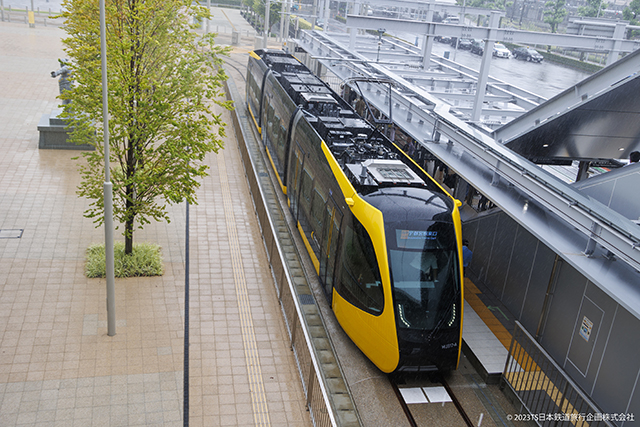
Recent Posts from TSJR
Rail fan site
- Japan Rail Enthusiast Updates and News – April 2025
 TOCHello from Tokyo Welcome to our latest Japan Rail Enthusiast Updates. Since our last update the cherry blossom has come and gone and at the time of writing much of Tohoku is enjoying the Sakura. Hokkaido will probably be enjoying during the Golden Week holidays. Talking about Golden Week, when planning a trip to Japan… Read more: Japan Rail Enthusiast Updates and News – April 2025
TOCHello from Tokyo Welcome to our latest Japan Rail Enthusiast Updates. Since our last update the cherry blossom has come and gone and at the time of writing much of Tohoku is enjoying the Sakura. Hokkaido will probably be enjoying during the Golden Week holidays. Talking about Golden Week, when planning a trip to Japan… Read more: Japan Rail Enthusiast Updates and News – April 2025
Recent posts on our main site (will redirect you to www.tsjapanrail.net)
- NHK World‘s Japanology Plus features TS Japan Rail’s Stephen Turner travelling on the Kominato Railway. Join Stephen Turner and host Peter Barakan as they embark on a scenic train journey through Chiba Prefecture’s historic Kominato Railway, for NHK World’s Japanology Plus. Turner talks about his love of Japan railways and travelling on local rural lines […]













